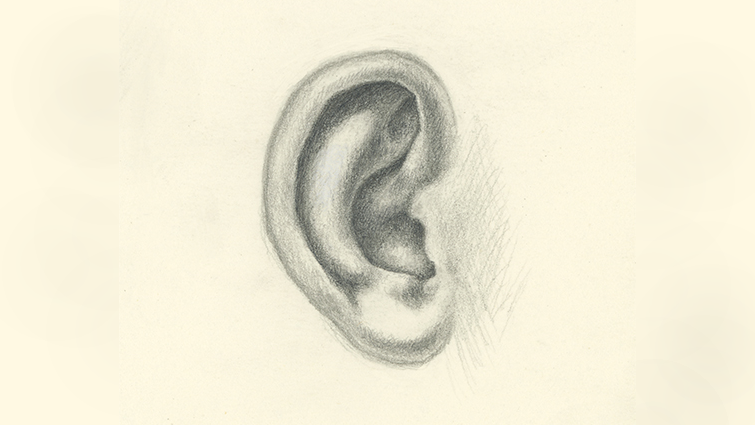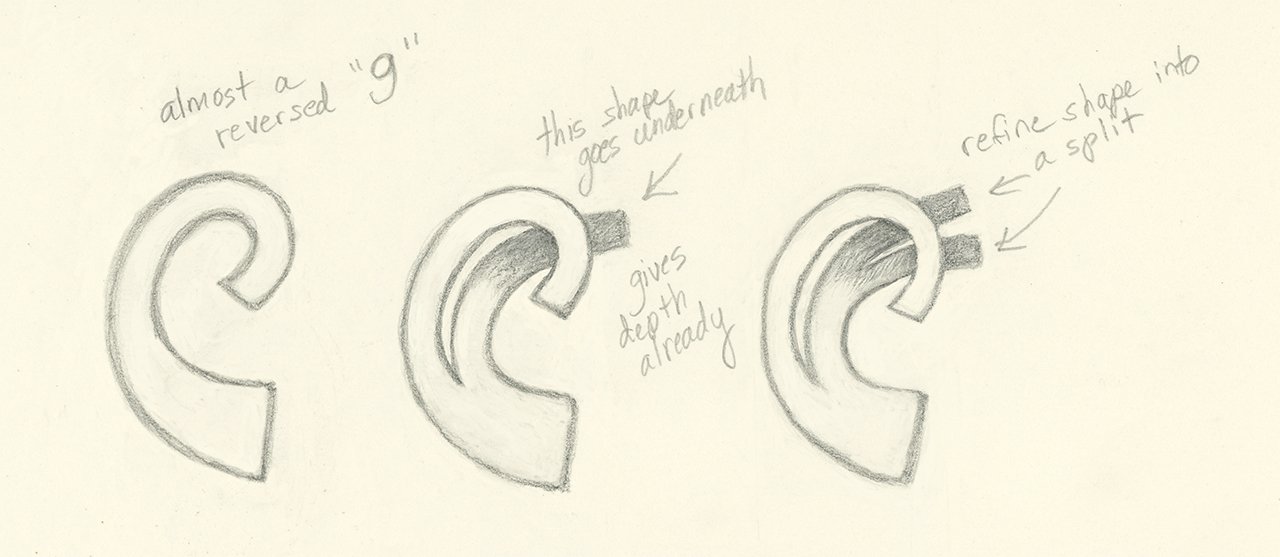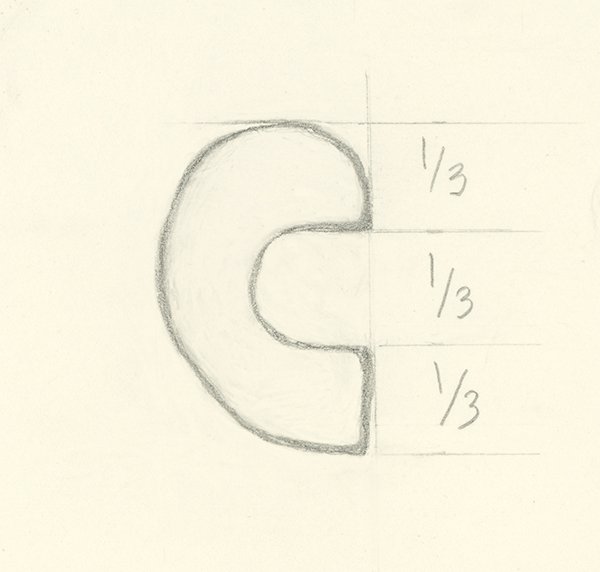
In light of the overwhelming support of my How to Draw an Eye post, I have decided to start a series of drawing tutorials. I begin by focusing on human anatomy and its complicated forms, namely the face and its appendages. As requested, hands and feet will be among the first forms I demonstrate.
Today I bring you a preview of what I will post in more detail tomorrow.
How to Draw An Ear
Does the idea of drawing a human ear fill you with dread? It doesn't have to. I'll show you how I learned and I promise to break it down into steps you will be able to follow. Drawing anything is all about knowing formulas. And to know formulas, you have to know basic shapes. After that, it's simply linking them together.
When I was about seven or eight, I used to go to our community college where my mother was an art professor. Usually I was allowed to sit in her class and draw at a desk in the corner while she taught. But one class I was forbidden from attending - Life Drawing with a nude model. I grew up in a pretty prude family. No one was ever naked. So naturally, I was curious about the adult naked body. While she was teaching this class, I sat in her office with all her teaching books. My favorite was a human anatomy book, because it was full of pictures of naked people. She didn't know I poured over the pages whenever I had a chance.
Once the naked people fascination wore off, I started to study the drawings and diagrams that showed basic principles of human proportion. I saw how they broke down eyes, noses, ears, lips, hands, feet - all of it. I started copying some of the sketches. Soon light bulbs would go off in my head about learning how to draw what used to be impossible features. Taking it in steps made sense. If you break things down, you can tackle anything.

In these first three sketches of the basic shape of an ear, I demonstrate how to start with a simplified curve. It could almost be a flipped "g" or a "9." The second sketch is a great visual representation of the first steps to create the illusion of 3-dimensionality on a 2D paper surface. We create that illusion by adding a darker value to the new added branch as it turns away into shadow behind the curve at the top. The third sketch is a little more refined and anatomically correct.

Once you get the initial curves in place, it's a good time to check your proportions. The human body is miraculous when you begin to study how its parts mathematically relate to each other in consistent ratios. With the ear, think of it as divided into thirds. Once you realize the divisions, you can start working on building up the darks, also called values, within those curves.
Stay tuned for the full tutorial tomorrow.
Drawings © Johanna Westerman 2016 for this steemit tutorial
